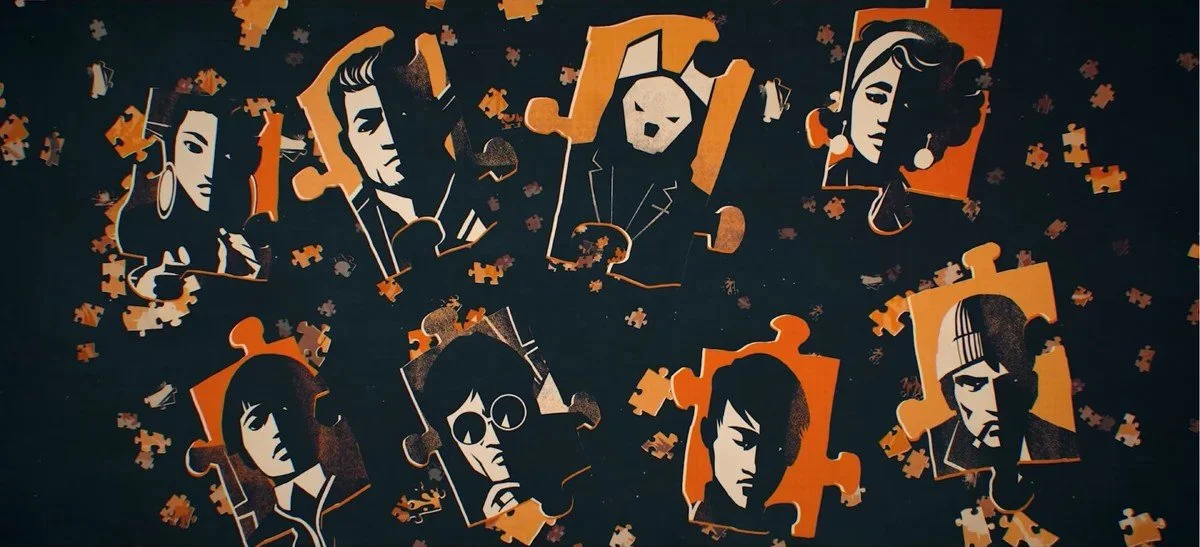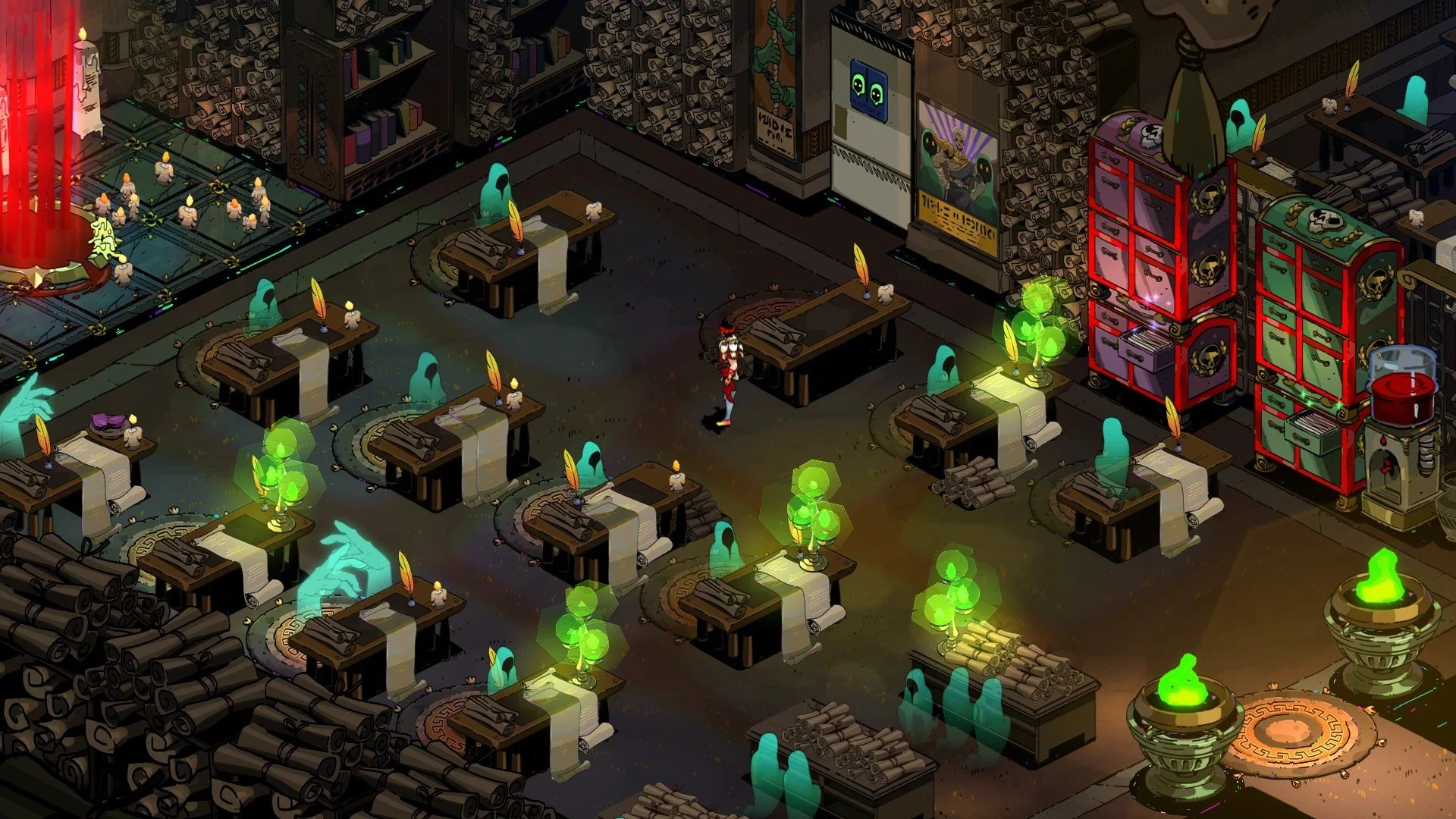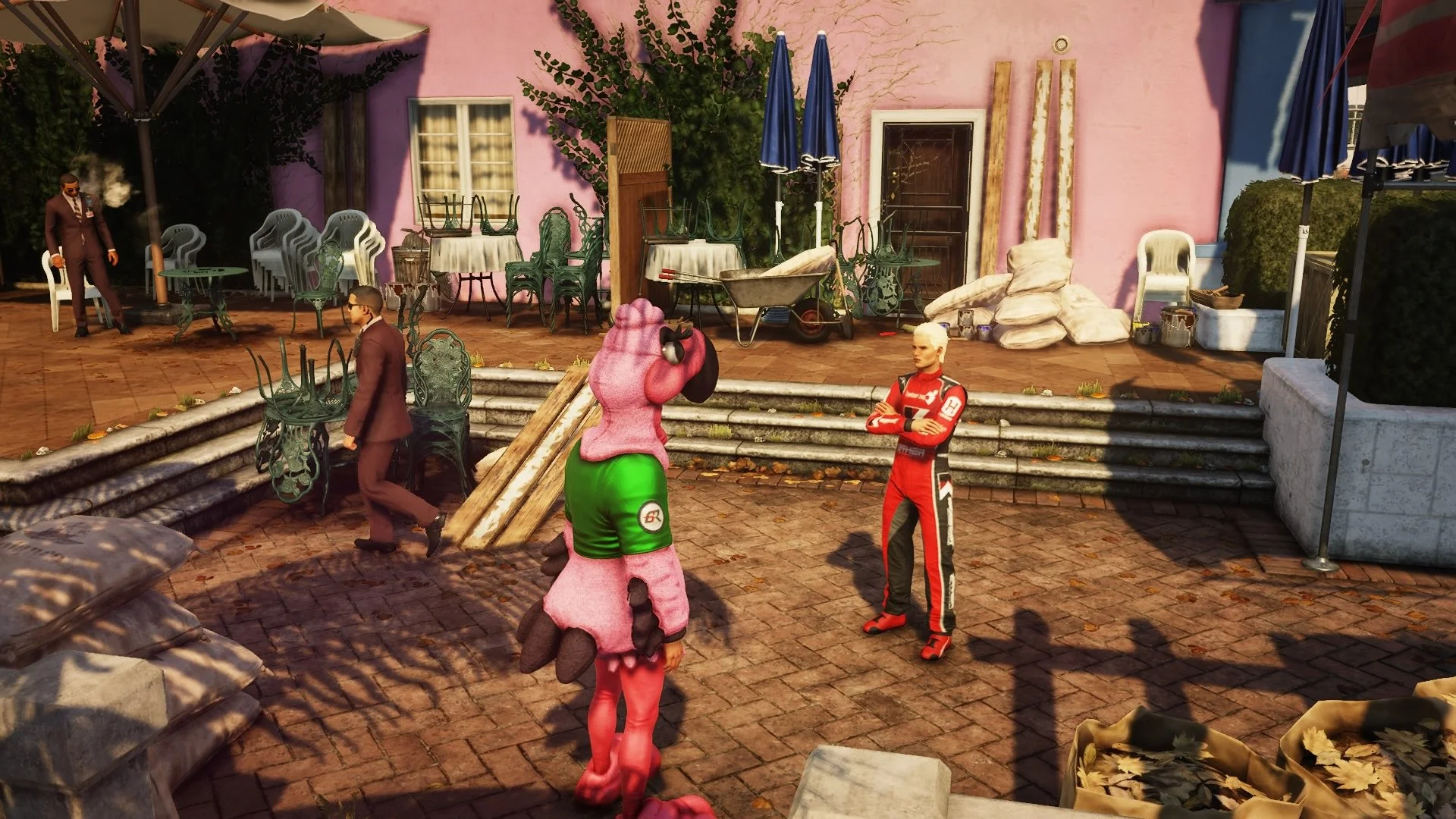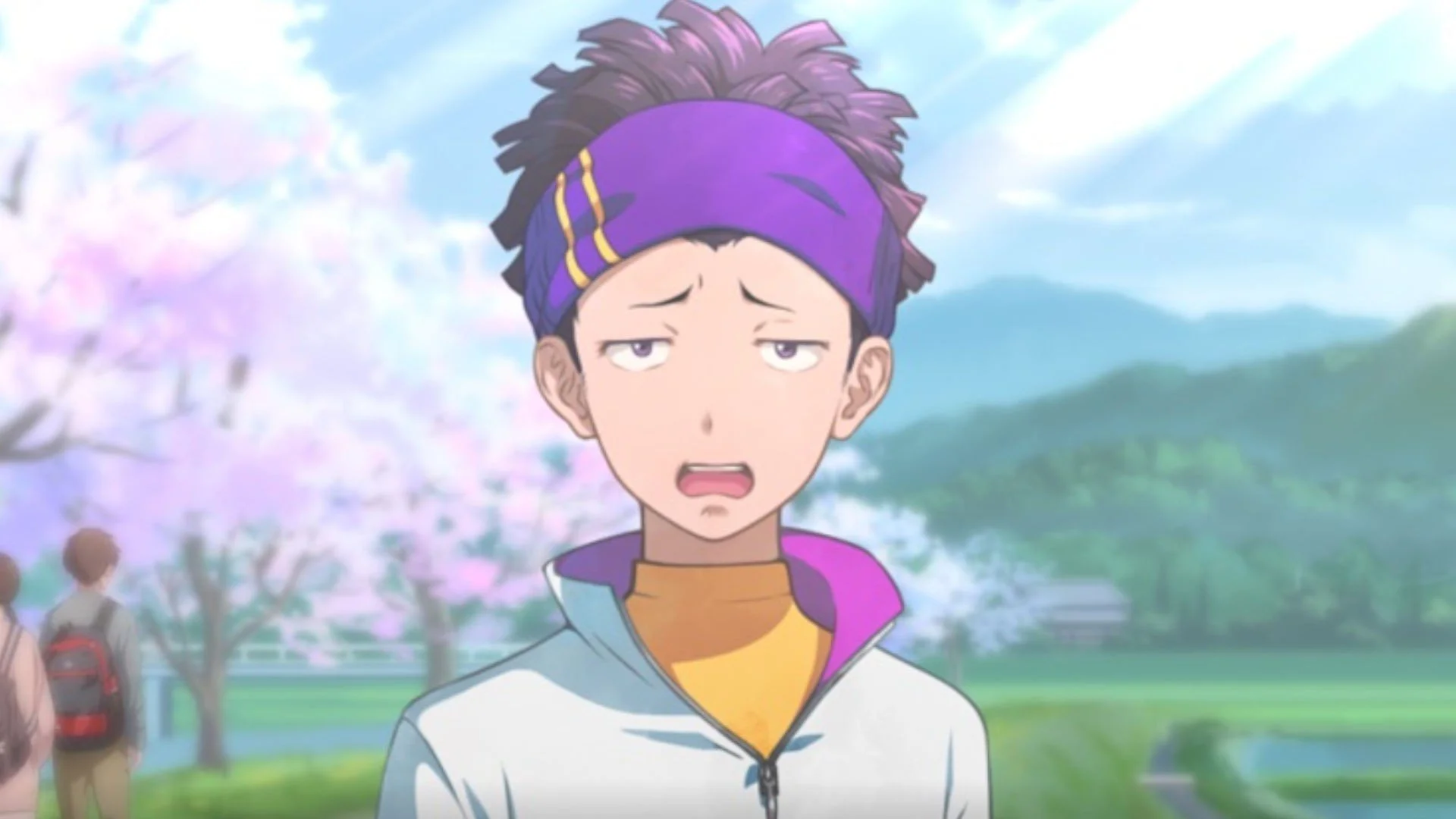Repetition as a Storytelling Device in Video Games
Video games are a medium where repetition is fundamental. Look no further than the very concept of a “core gameplay loop”, the idea that a game can be broken into these smaller processes that loop over and over throughout.
Not too long ago, Kirk Hamilton (of the Triple Click and Strong Songs podcasts) wrote about this repetition in video games, especially as it compares to music. This touched on something I have been thinking about for a while, but from a different angle: the ways video games use repetition as a storytelling device.
Furthermore, I think its worth splitting narrative repetition into two broad categories: diegetic repetition, and nondiegetic repetition.
Diegesis refers to elements that exist within the context of the story. I think looking at how a soundtrack works in movies is one of the easiest examples for understanding the concept. When a song is playing and the characters can hear it – like when they can turn off a radio and it stops playing – that song is diegetic to the movie. When a song is playing and the characters can’t hear it, when it’s just for the audience and is not playing in the movie’s world in any way, that song is nondiegetic.
With a definition out of the way, let’s look at some examples of these kinds of repetition in game stories.
Diegetic Repetition
Kirk mainly talks about Blue Prince in his post. Blue Prince is a game where each day is spent exploring a house that changes its layout. As Simon, the player’s character, reaches a door, they get a choice between 3 random rooms to have placed on the other side of it. They continue this way, exploring the house until they either reach a dead end or run out of energy to keep moving to new rooms, at which point the player moves on to the next day where it has all been reset.
This ever-changing house and the choices made by the player each day are completely diegetic. The process Simon goes through is explained in a letter in the entrance hall, and the player can even find the tent that Simon sleeps in each night.
Ultimately the goal is to master the puzzles and mysteries within the house, both player and character starting from a point of knowing absolutely nothing.
We can see a similar use of repetition with a very different style of gameplay when we look at Deathloop. Deathloop has its main character, Colt, stuck in a time loop that can only be ended by killing all the targets in this one day. Colt has amnesia in the first loop we experience, putting us and him at the same starting point in terms of knowledge of the situation.
Where Blue Prince uses this repetition to have players slowly gain understanding to help them solve puzzles in a setting that is in constant flux, Deathloop uses it to have the player gain mastery over a static environment. But in both cases, this diegetic repetition along with the respective player character’s lack of knowledge at the outset, combine to put the focus of the story on learning about their worlds.
This use of repetition turns these games into mysteries to an extent, and the player is put into the position of a detective stepping into a scene and figuring out how it all works. The repetition is a means of having the player discover the plot at their own rate, by their own means.
While both games tie their stories to gaining understanding for their respective worlds, that isn’t the only way to use this kind of repetition.
Hades is another rogue-lite game, like Blue Prince, that uses repeated runs through randomly generated spaces as a core aspect of its gameplay. But rather than a story built around gaining knowledge, Hades is more about finding joy or purpose in one’s work.
We learn through a flashback sequence that Zagreus, Hades’s main character, spent a short time working in administration before he started trying to escape. This office life wasn’t for him. But by the time the player reaches the end of the story, Zagreus’s attempts to escape literally become his job. This is something he enjoys doing, something he can repeat day in and day out and find some degree of pleasure in it.
This repetition is once again putting the player in the character’s shoes, but this time it is more about creating a thematic bond between gameplay and story. If the player is having fun playing the game, they are finding joy in this repetitive work, just as Zagreus is.
For a final example, there’s The Sexy Brutale. This is another time loop, but the loop itself is used as a metaphor for reliving the same moment of regret over and over again, desperate for any way to change it.
While a time loop, the form of its repetition, is closer to Deathloop, it’s use of the loop is closer to Hades. This is repetition coming together with goal-based gameplay conventions, to tell a story in a way that makes the player complicit with the character’s obsession.
To see more on this game in particular, you can look at this older post I wrote about it here.
Each of these games have the player and protagonist experience the story and its many repetitions in the same way. It is in experiencing these together, that the player is put more directly in the mindset of these characters. But now let’s look at some examples when this isn’t the case.
Non-Diegetic Repetition
We see small examples of non-diegetic repetition in games all the time, in ways most people don’t even think about. In a lot of games where death or another fail state is a possibility, you revert back to an earlier point and try again. This most often comes with the implicit understanding that while you experienced that death, the truest version of the story is the one in which you succeed.
Take for example the game over screens in Batman: Arkham Asylum. When you die, a villain will come out and essentially mock the fact that Batman was defeated. These are fun moments to taunt to player, but the “real” final story is the one in which Batman succeeds, regardless of how many of these screens the player might see. They are part of the player’s experience of the story, but not part of its literal events.
Assassin’s Creed (2007) calls attention to this by having its health bar called “synchronization bar”, the idea being that if it is full, you are fully in sync, out of diegesis, with Altair, the main character of the past. But at the same time, the game is built on a structure where you are playing as Desmond, a modern-day character, who is experiencing memories of the past. When your synchronization bar diminishes, the diegetic explanation is that Desmond is falling out of sync with Altair. This extra layer is calling attention to our usual understanding of how these stories function.
But non-diegetic repetition isn’t exclusive to replaying a moment where the player fails. Let’s look how it’s used in an even bigger way with the Hitman: World of Assassination trilogy.
There is an argument that, in terms of gameplay, these Hitman games are using repetition in the same way as Blue Prince and Deathloop. But where all three of these examples use repetition to create a sense of mastery, Hitman doesn’t treat the repetition as diegetic to its world. The player’s character, Agent 47, isn’t in any kind of time loop, he isn’t killing clones, he’s a master assassin killing each target exactly one time and then moving on.
This form of repetition to create mastery is used to get the player up to the standards of the character they are playing as. They may not be starting at the same point as Agent 47, but their going to be up to his standards by the end of it. This is an idea explored more in depth in the Game Maker’s Toolkit video “Hitman, and the Art of Repetition”.
While so far this sounds like you could understand your most recent or potentially your best run through a level as the “real” version, there is another factor that I think makes this even more interesting.
Each level in these Hitman games contain several Mission Stories – chains of goals that can lead the player to special circumstances to kill the target. Upon beating a level, the player is met by two options: either move onto the next level or replay the current level to finish any of the remaining 3 specific Mission Stories it recommends.
While completing these Missions Stories can aid in the player becoming more like Agent 47 in their mastery over these levels, they also deliver key information about either the targets in the level or the wider conspiracy that Agent 47 in getting involved with throughout the trilogy.
These Mission Stories are employed to deliver exposition needed to understand the full scope of the story to the players who wish to find it. But they can also contradict each other if taken as all having been literally done by Agent 47, as multiple Mission Stories in a level could end in killing the same target.
Hitman is using the same implicit agreement that just because the player failed at something, it doesn’t mean the character did, and it’s using this to spread exposition into different means of engaging with the level. Its simultaneously making this exposition more engaging, while encouraging the player to replay the level and therefore pushing the player closer to mastery where they connect to the character. It is simultaneously saying that not everything the player does could have happened, but it’s all important to the player’s experience of the story.
Hitman is a great example of using this non-diegetic repetition in a micro sense. It’s about replaying individual levels at a time. But there are also a lot of cases where we see a far more macro version of this where it is about replaying the entire game.
We have games like Bioshock or Mass Effect that have morality systems built in to allow the player to have varying degrees of different experiences depending on choices. Or something like Dishonored 2, that takes the same idea but goes so far as to have the protagonist of the game change based off the player’s choices, leading to even more branching possibilities.
Until Dawn makes player choice a huge part of encouraging replayability using a butterfly effect motif to highlight how particular actions led the player down a particular story path. Life Strange uses that same motif, but on top of encouraging replayability (non-diegetic repetition), it utilizes a diegetic time reversing mechanic for the player to try out different options in the moment without immediately being stuck with their decisions.
In all these examples, the non-diegetic repetition that comes about from replaying the game to have these new experiences, is used not only to give the player more ways in which to engage with the game, but on a story level it allows for exploration of the same idea from different angles.
It’s worth noting that, while there are exceptions, for the most part these games don’t present one ending as more or less true than others – though there are usually ones that are happier than others. While repetition is being utilized by creating the possibility to play again with new choices, there is nothing necessitating this repetition, to the point that many players will probably only experience one version of how the story could play out.
With that in mind, let’s look at one example of a game that pushes this a little harder: Digimon Survive.
Digimon Survive is primarily a visual novel, a game that is more about reading than what is traditionally considered gameplay. Like the past handful of examples, this game has multiple endings that are reflective of player choice. But what this game does that none of those other games do, is lock one ending behind a second playthrough. If you want to experience this ending, repetition becomes necessary.
How this works is that after beating the game a first time, regardless of the ending the player gets, they will have a message pop up saying, “If Ryo’s Affinity was higher, maybe everyone could have survived”.
This Affinity that the message refers to is essentially a friendship stat, and having Ryo’s high enough could prevent his death, a task that isn’t possible on a first playthrough. In beating the game, the math behind the Affinity stat changes, and this message nudges the player to try again.
By having something become possible only on a second playthrough, it’s taking the idea from other games, that the option is there to play the game a different way and effectively making it part of the story that you need to play a second time. And of course, just like replaying any of these other games, this is non-diegetic. The characters are not experiencing any of it a second time, it is just the player who does.
This choice takes one specific plot point, the death of Ryo, and puts it on a pedestal above everything else. This moment the keystone that holds best version of events in place. The themes in the game then become best understood by looking at what is different between the first playthrough versus a future playthrough where you do save him.
Through all these examples of non-diegetic repetition in video games, we’re seeing games that weaponize the dissonance between how the player experiences the story and what the player is meant to understand on a literal level about the plot of the story. They’re taking advantage of something that’s become inherent to how story functions in its medium and using that to its advantage to tell a story that could only be crafted in this medium.
Final Thoughts
Video games are built on interactivity, and because of this repetition is a huge part of how we engage with them. Using this repetition in how we tell stories within the medium opens so many possibilities that couldn’t be done any other way.
When looking at examples of diegetic repetition, we see things like time loops. These are stories we’ve seen before in other mediums, but the ways in which the repetition occurs are completely different. If Groundhog Day showed us every minute of every day, it would be an incredibly boring movie. Instead, it uses elements like montage or skips huge numbers of days. But when it comes to this kind of repetition in games, repetition is the point.
And then there is the non-diegetic repetition, which if we limit to times in which replays are used to experience new endings, we can see approximations of this in things like Choose-Your-Own-Adventure books or even the multiple endings of Clue (1985). But these instances still have their limitations. These books don’t really have a means of putting importance on a second read-through like Digimon Survive, and Clue doesn’t have the viewer experience the entire movie again for each ending.
But when we zoom out to include all ways in which non-diegetic repetition is used in games, bringing in cases like a game’s use of repetition after reaching a fail state for instance, is there even a reason why any medium that isn’t built around interactivity would even want to emulate such an effect?
While repetition isn’t the only storytelling device that is so specific to video games, it is one that I don’t often hear talked about. So, here is at least one potential start to that conversation.
If you enjoyed this and want to have future posts emailed to you, please subscribe to the Unsupervised Nerds Substack.







